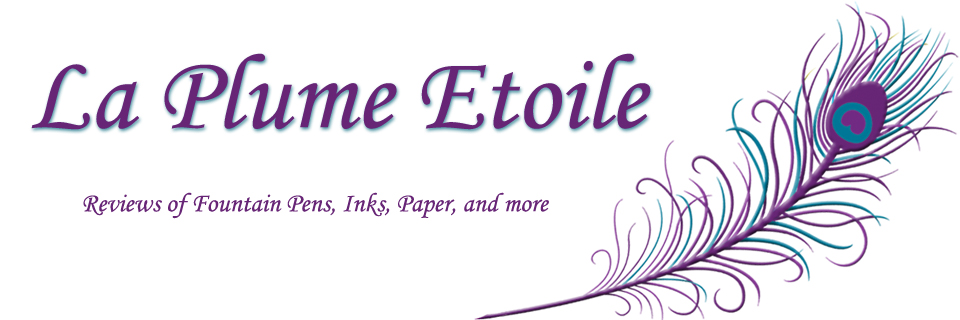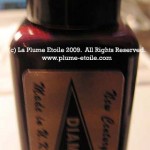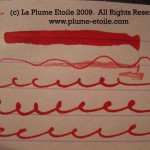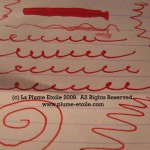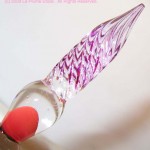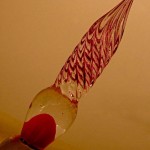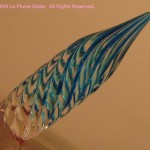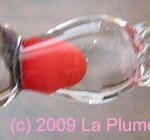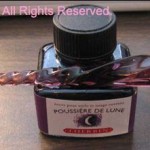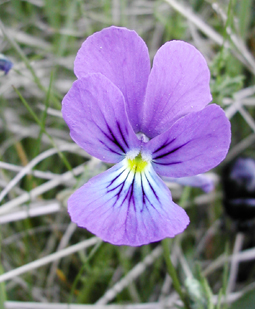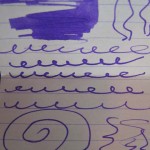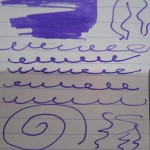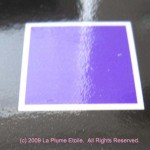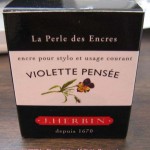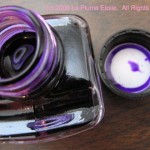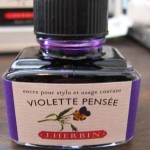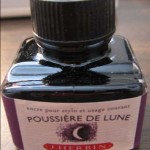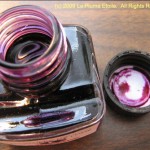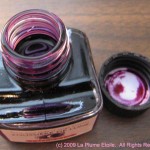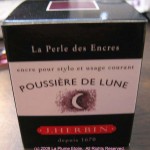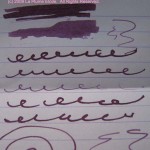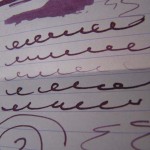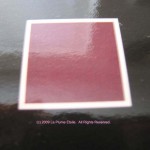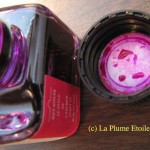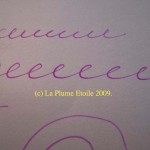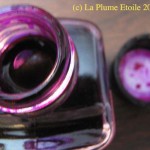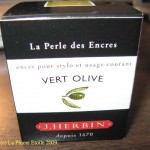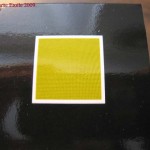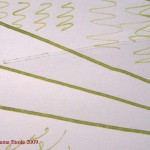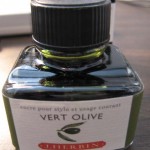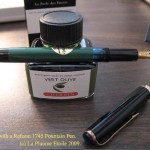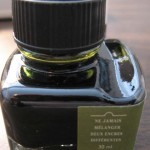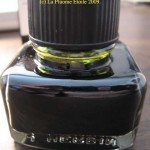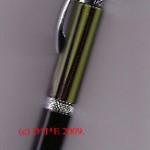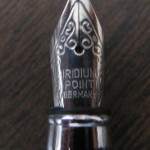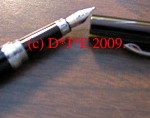My friend Ian recently gave me an Esterbrook No. 427 Dipless inkwell. I believe it belonged to his parents and it has been sitting unused for quite some time.
About the inkwell: There is not much information about this kind of inkwell online and it seems to be somewhat rare. I have learned they were produced roughly between 1940 and 1952. The base is made of bakelite, which is one of the first plastics made from synthetic compounds. Bakelite has been used for radio casings, jewelry and other items. The “dipless” type of Esterbrook inkwells does not mean that you don’t have to dip the pen. The construction of the inkwell allows for a resavoir of ink where the pen inserts, so the pen needs to be dipped less often. These inkwells also came with chrome clips that fit on the grooves of the glass, but these clips were missing on mine.
The Beginning: Here is a photo (using the flash) of my inkwell when I received it. The glass wells are upside down here and, as you can see, the entire inkwell is caked in dirt.

Here is a shot without using the flash:

Cleaning: I filled a bucket with water and dish soap. I rinsed all parts with water, and let the parts soak in the bucket while I worked on each piece individually. There was still some very old ink inside the well and I was surprised to see it flowing out when I rinsed the well. I carefully scrubbed the glass wells and rubber stoppers with a toothbrush and the soapy water. Next, I did the same with the base portion, however, I also had to use a hard bristle cleaning brush because the remaining dirt was firmly stuck to the base. Here is the result after cleaning it as best I could:

As you can see, there was still a bit of grime on it and the finish is very dull.
Polishing: After doing some online research and asking around, I learned the best product to restore and polish bakelite is a polish called Simichrome. Simichrome is also used for silverware and, you guessed it, chrome. The problem with this product is that it is extremely hard to find in brick-and-mortar stores. I called eight stores before finding it in a local hardware store. Simichrome is available on Amazon.com and various online retailers, but I much prefer buying products at a physical store. After finally buying a tube of Simichrome, I used it with a soft cloth to polish the base. I used a car polishing cloth, but you can also use a soft old t-shirt. First, apply a tiny amount of Simichrome on the cloth. Second, rub Simichrome on the bakelite in circular motions, then buff it off with a clean portion of the cloth. At first, the bakelite didn’t look much shinier than before. Then I discovered that the magic really happens in the buffing portion. Slowly, the bakelite started getting shiny. After buffing, the bakelite looked good. However, I decided I wanted the bakelite even shinier. I came to terms with the fact it would not be as shiny as if it had a clear-coat on it, but I wanted it to be as shiny as possible. I then used Turtle Wax car polish and rubbed it on/buffed it out in the same manner as I did with the Simichrome. The Turtle Wax I used was the paste version in the tub and it really helped to bump the shine up a notch.
Disclaimer: Using Turtle Wax was my own decision, as nobody recommended it to me for restoring bakelite. I do not know if Turtle Wax is good for bakelite in the long term. However, it worked really well, with no apparent damage to the bakelite.
Final result: In bright light, as seen below with the flash, you can still see some scratches in the bakelight:

Without flash, you can see how the bakelite really shines. This is how it looks in reality:

Here are two more shots, with flash and without flash respectively, as to how the inkwell looks on my desk:


I am really happy with how beautiful this inkwell looks now! I am also happy to be able to give it new life and a good home.
I am happy to answer further questions about this restoration and comments are welcome!








